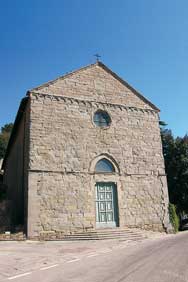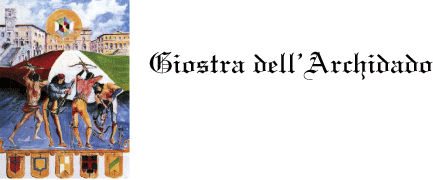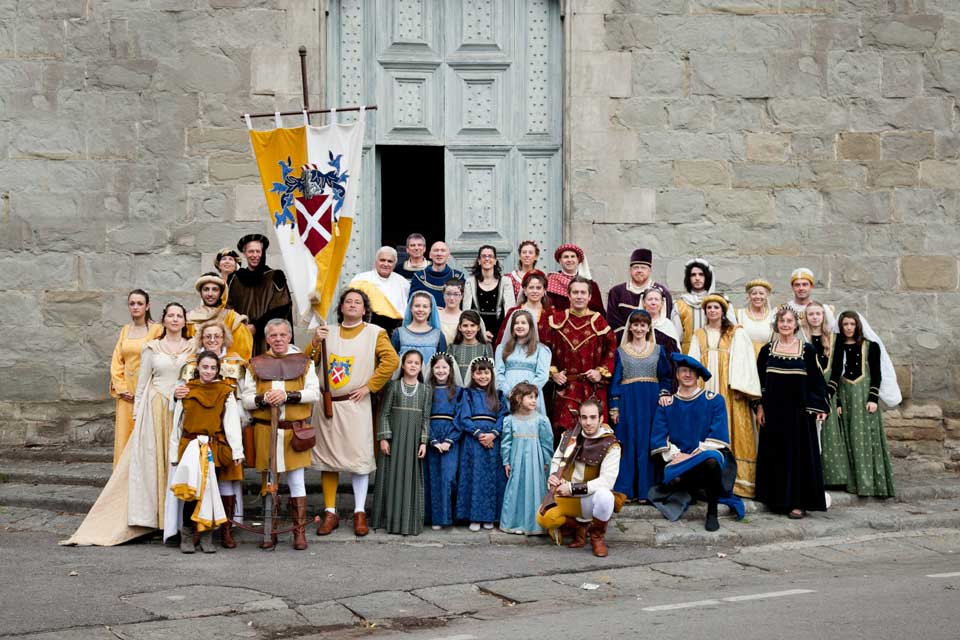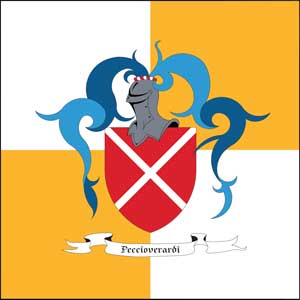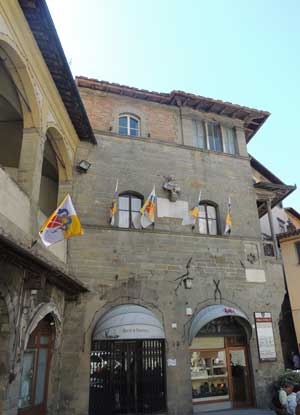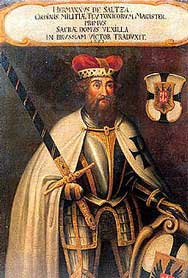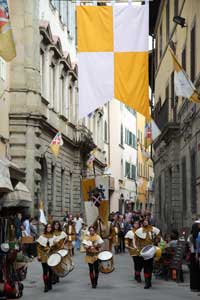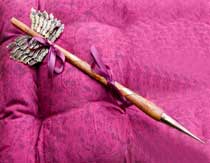In Roman times entrance gateway Porta Pretoria (“face to the enemy”), which was also called “Porta Veranda”, “Porta Peccioverarda or even “Peccioverardi” in the Middle Ages, was located on the South-East side of the city walls of Cortona, which prove the succession of ancient historical events. In the 13th century, after the construction of the beautiful church and convent of the Dominican Friars, the gateway took the name of “Porta San Domenico”.
A flat street called “Rugapiana” (which once was part of the decumanus, the East-West oriented road in Roman times) links the periphery with the main square of the town and is the main street of Quarter Peccioverardi, which also includes the neighbourhood of S. Domenico. The Quarter derived from the pre-existing organisation of the town in three quarters (S. Maria, S. Marco and S. Vincenzo, in 1248), which were regulated in conformity with the Statute of 1325.
